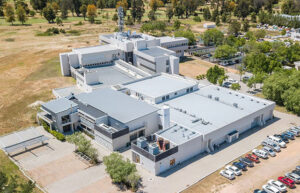Other space businesses in Noosphere’s portfolio include satellite imagery startup EOS Data Analytics (EOSDA), electric propulsion systems maker SETS and orbital transfer vehicle provider D-Orbit.
Dragonfly said its team has more than 20 years of experience in imaging satellites and payloads, mainly through the high-resolution cameras that it builds. The company said in October that it will build two satellite cameras for EOSDA’s first satellite, a crop-monitoring spacecraft slated to launch in 2022.
“Dragonfly Aerospace’s expertise in creating imaging constellations is an important step in the development of our vertically integrated space ecosystem,” Polyakov said in a statement.
“Dragonfly’s advanced technology provides high quality images in a wide range of spectrums and resolutions that are critical for monitoring the health of our planet and enabling intelligent agriculture that protects biodiversity. This improves global food security and supports a healthy environment which ultimately benefits the lives of people on Earth.”
Dragonfly has been investing in a facility near Cape Town International Airport in South Africa to build microsatellite constellations, in addition to its radiation-resistant optical components.
The company plans a production line that could churn out 16 satellites in parallel, up to 48 per year. The 3,000-square-meter facility will specialize in 50-600-kilogram satellites.
“When our team started developing our camera technology in 2016 and then first demonstrated it successfully on the nSight-1 satellite in 2017, I knew that satellite imaging products would prove critical in the rapidly developing nanosatellite sphere,” said Dragonfly CEO and co-founder Bryan Dean.
“We have applied our extensive experience in developing and flying large microsatellite imagers to create innovative products for this exciting market segment. Our strategy is to work in partnership with satellite bus providers and in time deliver microsatellite solutions as well.”
Dragonfly embarked on its expansion strategy last year after being carved out from South African technology company Space Commercial Services, growing from 15 staff to more than 100.
The company currently focuses on providing cameras to Europe and other markets outside the United States. Customers include satellite makers NanoAvionics and Loft Orbital, as well as Indian hyperspectral imaging startup Pixxel.
Dean told SpaceNews shortly after winning the EOSDA contract last year that Dragonfly was looking for an American partner to expand into the U.S. because “it is challenging to access it as a South African company.”
He said: “So far, the European markets have been the most stable in terms of demand for our products, but Asian markets have also absorbed our output, and we want to grow more there.”
Polyakov told SpaceNews in November that EOSDA and Dragonfly were looking to expand their cooperation, potentially extending their contract’s scope to a seven-strong constellation, after the expected successful validation of the first satellite in 2022.
Polyakov detailed plans to build an integrated space powerhouse in a recent Q&A with SpaceNews.
“EOSDA is the foundation of the entire vertically integrated ecosystem we are developing,” he said.
“It is the point of integration for all the firms that we have and for other market players. The strategy is to build a project that will accumulate all data and knowledge we receive from space and Earth and to make sure it is used to preserve the nature and environment on Earth.”
SpaceNews correspondent Jaroslaw Adamowski contributed to this story from Warsaw.



